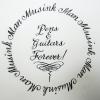Invitation To Show Off Your Stuff...
-
Forum Statistics
357.4k
Total Topics4.7m
Total Posts -
Member Statistics
129,956
Total Members18,857
Most OnlineNewest Member
Case Study Help
Joined -
Images
-
Albums
-
USG 22
- By USG,
- 0
- 0
- 101
-
Lam1 Album
- By Lam1,
- 0
- 0
- 24
-
namrehsnoom-19
- By namrehsnoom,
- 0
- 0
- 93
-
Pen Pics 2
- By K Singh,
- 0
- 0
- 96
-
more1
- By AmandaW,
- 0
- 0
- 27
-
















.thumb.jpg.f07fa8de82f3c2bce9737ae64fbca314.jpg)









Recommended Posts
Create an account or sign in to comment
You need to be a member in order to leave a comment
Create an account
Sign up for a new account in our community. It's easy!
Register a new accountSign in
Already have an account? Sign in here.
Sign In Now